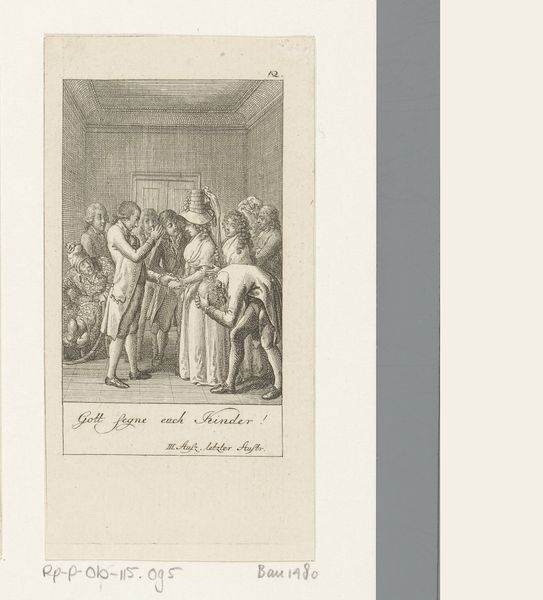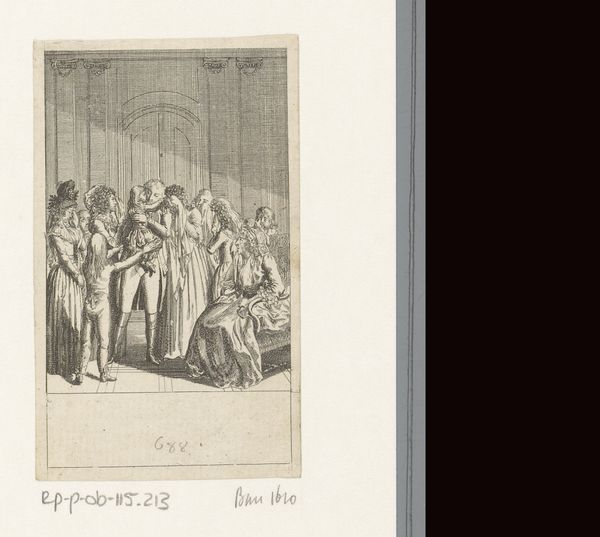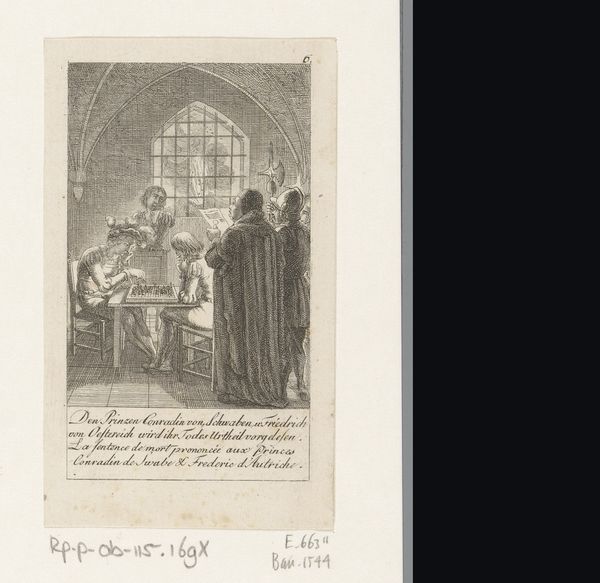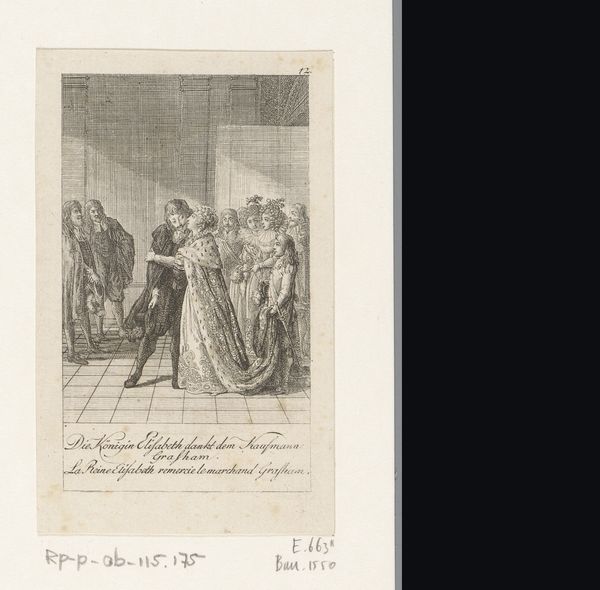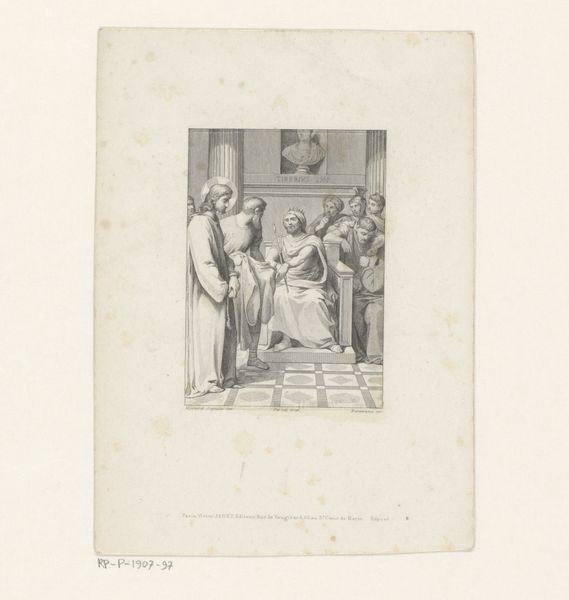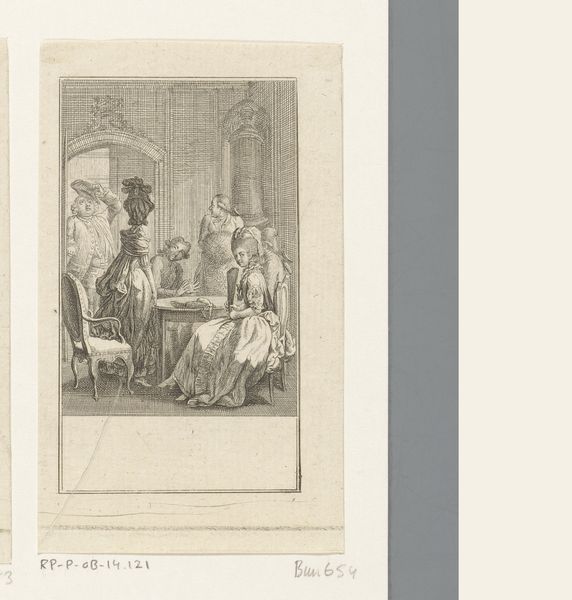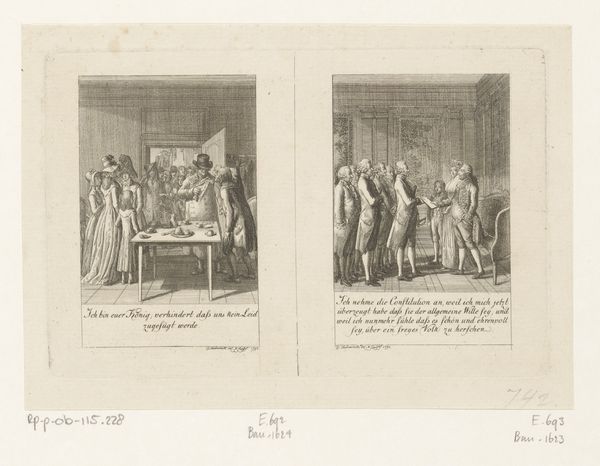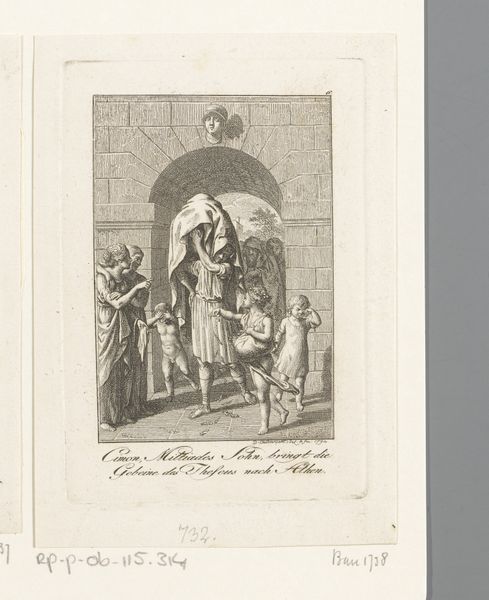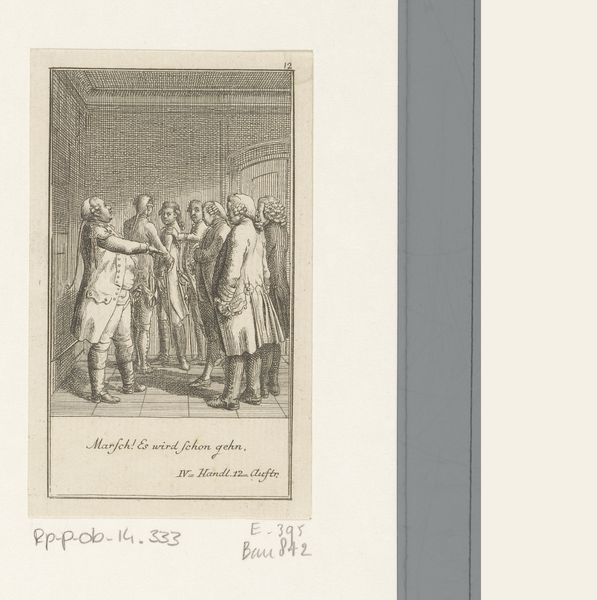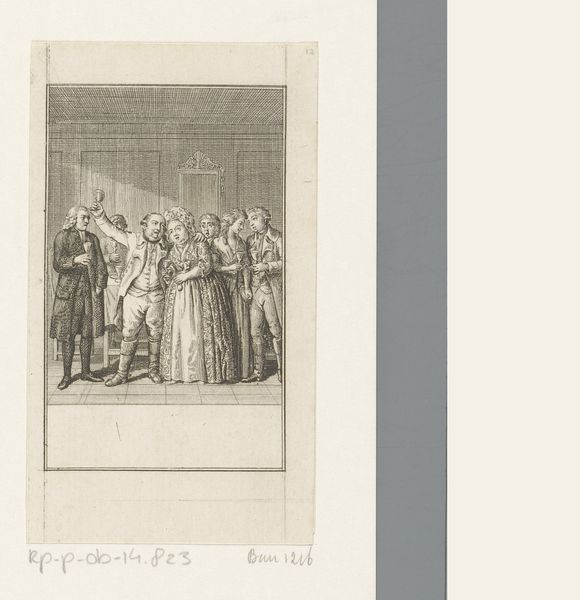
Franz II troost zijn gezin na de dood van zijn vader, Leopold II 1792
0:00
0:00
danielnikolauschodowiecki
Rijksmuseum
paper, engraving
#
portrait
#
figuration
#
paper
#
group-portraits
#
romanticism
#
line
#
genre-painting
#
history-painting
#
engraving
Dimensions: height 112 mm, width 63 mm
Copyright: Rijks Museum: Open Domain
Curator: Looking at this print, created by Daniel Nikolaus Chodowiecki in 1792, titled "Franz II comforting his family after the death of his father, Leopold II", one can immediately sense a profound emotional weight. Editor: Indeed. It's immediately striking how much grief is palpable, despite the delicate line work. The artist captured a family united, but visibly overwhelmed. What can you tell me about its historical context? Curator: Certainly. It's important to consider that this work, now held at the Rijksmuseum, comes to us during a very turbulent period, both personally for the Habsburgs and politically in Europe. Chodowiecki uses the medium of engraving on paper to commemorate a private, yet politically charged moment: the young Franz II inheriting the throne after the sudden passing of his father. Editor: Knowing that Leopold II’s reign was short and sandwiched between those of Joseph II and Franz II casts an interesting light on this image. The act of 'comforting' then becomes a crucial political performance, almost an announcement of stability amid upheaval. How does Chodowiecki emphasize the materials used, in terms of both technique and composition, in order to heighten this impact? Curator: Notice the use of very fine, precise lines. This suggests careful and considered labor; the engraving process demands meticulous attention to detail. Also, there’s very little shading. The emotionality of the scene stems from gesture and pose rather than strong contrasts, which could point to both artistic preferences of the time, and perhaps emphasize clarity during times of perceived chaos. The choice of paper itself contributes too—its fragility speaks to both the vulnerability of the family and the ephemeral nature of power. Editor: This adds a layer of socio-political commentary. I think there's also an important intersection of gender and power present: all around Franz II, family members lean and look to him for guidance, but one woman seated at the right appears particularly inconsolable. The body language and facial expressions of each member reflect perhaps traditional roles but emphasize different relationships to authority during grief. Curator: Absolutely. There is that interesting duality. Chodowiecki has managed to create something that straddles genre and historical painting. A commemoration but with a certain interiority and pathos on display. Editor: Looking at the interplay between representation and technique really brings out so much, especially considering the political and family dramas at play. Thanks! Curator: Yes, thank you. Understanding both its craft and context makes this historical moment even more immediate.
Comments
No comments
Be the first to comment and join the conversation on the ultimate creative platform.
